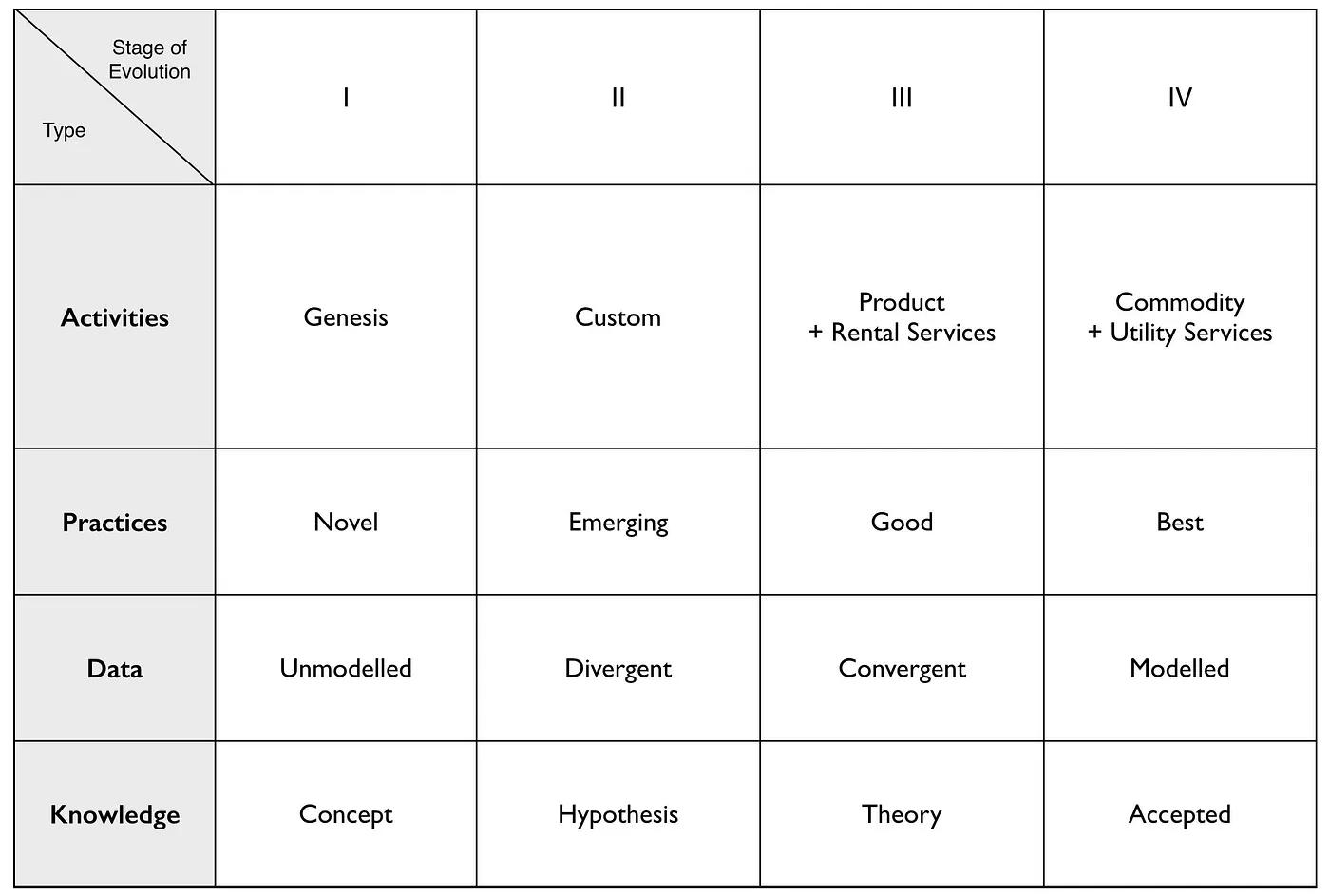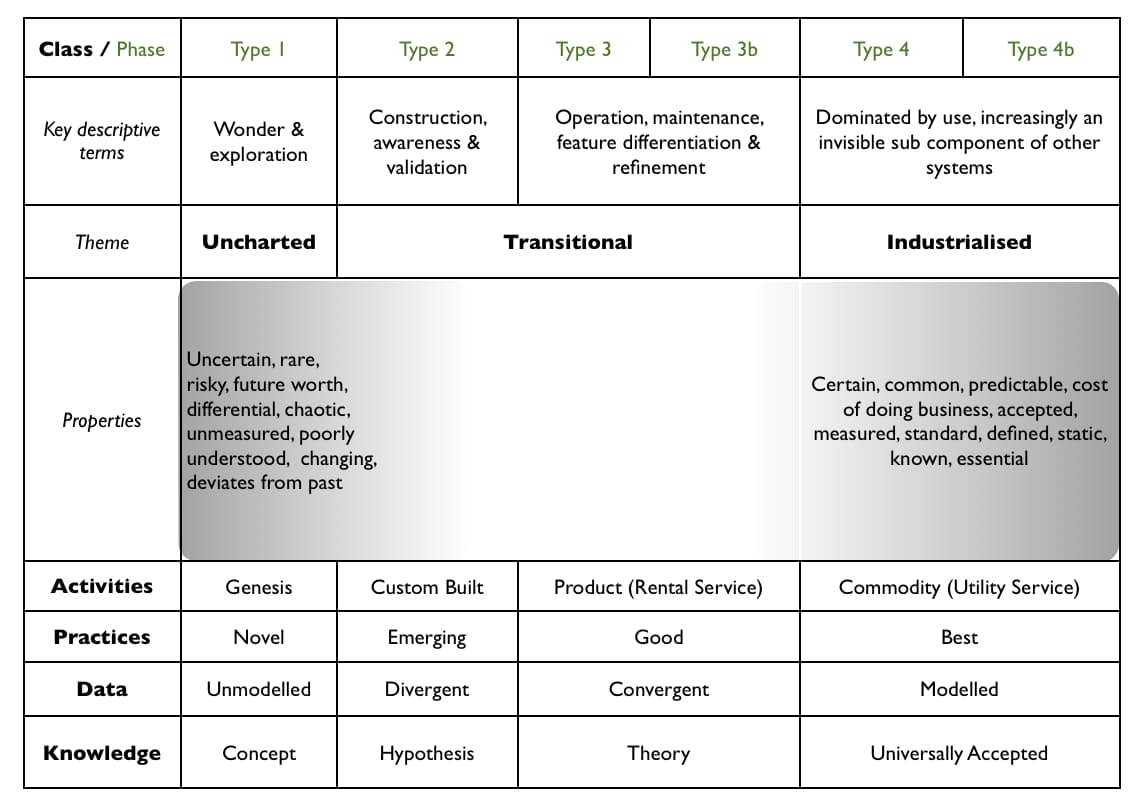Phase: Stop Self Harm
Principle: Understand What is Being Considered
Practice: Understand Types of Components
Understand Types of Components
Communication
Motivation
There is a strong correlation between awareness and performance, so focus on this. Try to understand the landscape that you are competing in. Understand any proposals in these terms. Look before you leap.
Consider these first
Illustrative description
Components can represent different types of things: activities, practices, data, and knowledge.
Detailed description
Components can represent different types of things: activities, practices, data, and knowledge. All these types of components can evolve driven by competition. The terms we use to describe the separate stages of evolution are different for each type.

We often label stages of evolution as Genesis, Custom, Product, and Commodity. We do this for simplicity, regardless of component type.

For each of the components in your value chain, identify what type of component it is.
Reminder: Stop reading, take action
